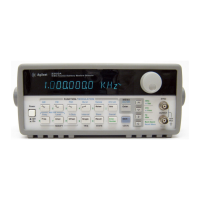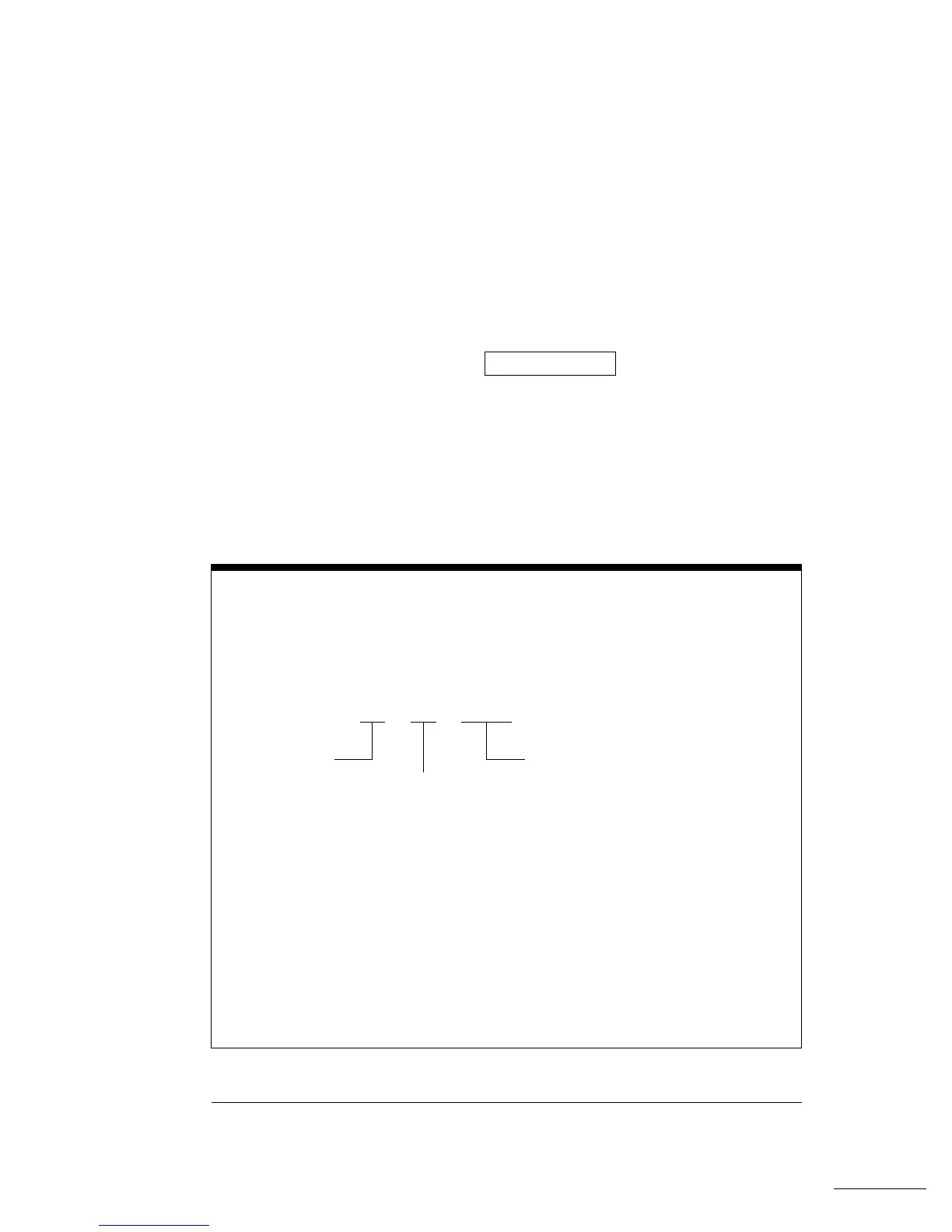DATA:DAC VOLATILE
(continued)
To download binary data over the RS-232 interface, you must select
8 data bits with no parity. See “RS-232 Interface Configuration” on
page 195 for more information.
The following statement shows how to use the DATA:DAC VOLATILE
command to download eight integer points using the binary block
format (see also “Using the IEEE-488.2 Binary Block Format” below):
"DATA:DAC VOLATILE, #216 Binary Data "
The following statement shows how to use the DATA:DAC VOLATILE
command to download eight integer points:
"DATA:DAC VOLATILE, 2047,1536,1024,512,0,-512,-1536,-2047"
Using the IEEE-488.2 Binary Block Format
In the binary block format, a block header precedes the waveform data.
The block header has the following format:
The function generator represents binary data as 12-bit integers, which is sent
as two bytes. Therefore,
the total number of bytes is always twice the number
of data points in the waveform
(and must always be an even number ). For example,
32,000 bytes are required to download a waveform with 16,000 points.
Use the
FORM:BORD command to select the byte order for binary transfers in
block mode. If you specify
FORM:BORD NORM (default), the most-significant
byte (MSB) of each data point is sent first. If you specify
FORM:BORD SWAP,
the least-significant byte (LSB) of each data point is sent first. Most PCs use
the “swapped” byte order.
# 5 32000
Even Number of Bytes to Follow
(32,000 bytes = 16,000 points)
Start of
Data Block
Number of Digits
to Follow
Chapter 4 Remote Interface Reference
Arbitrary Waveform Commands
180

